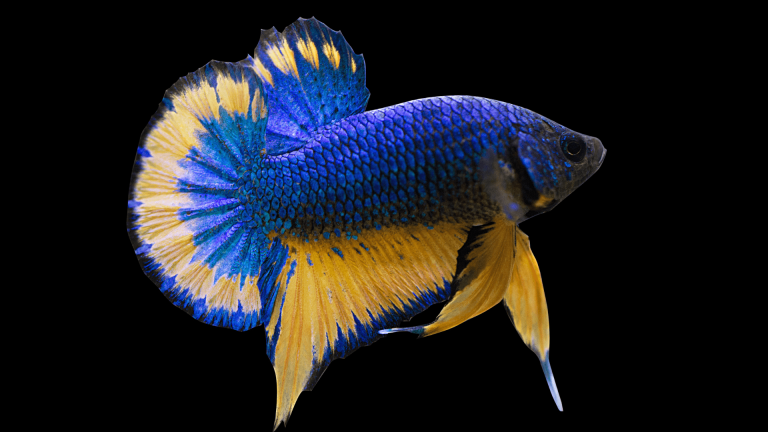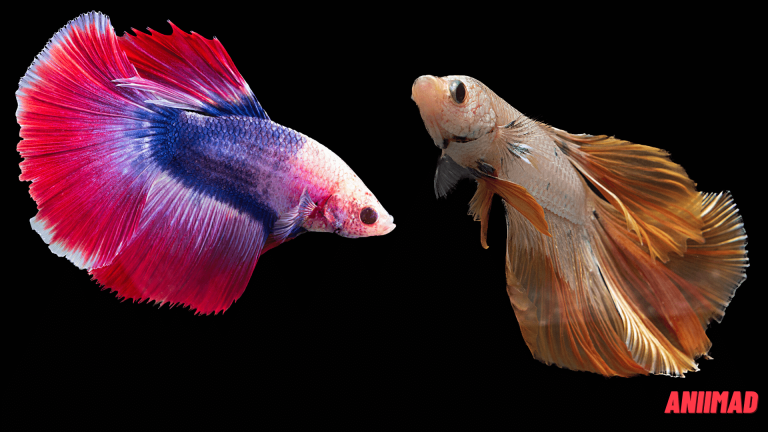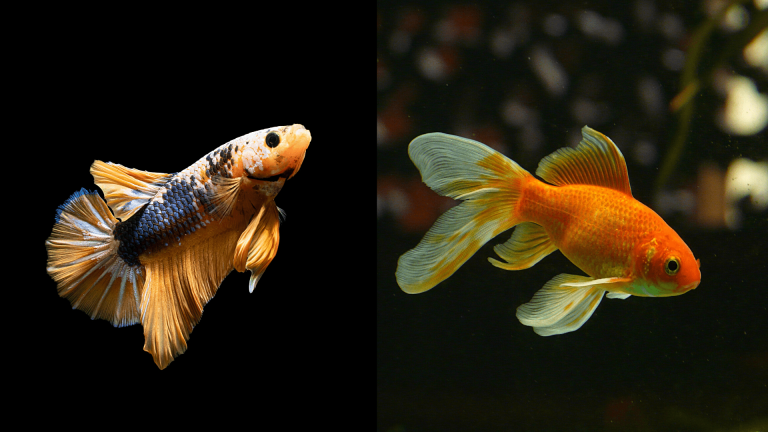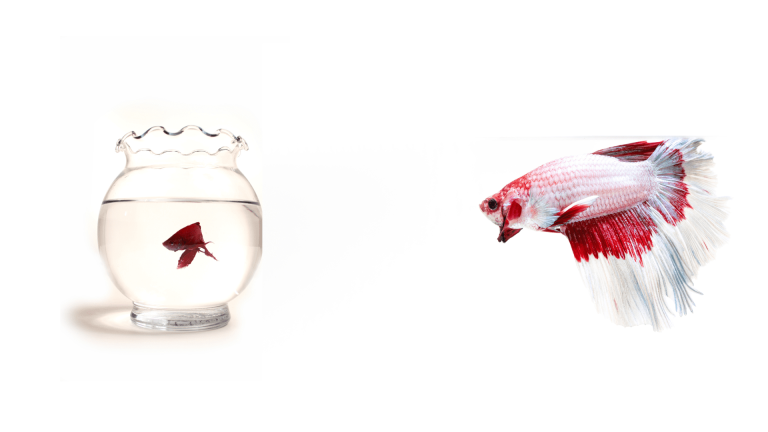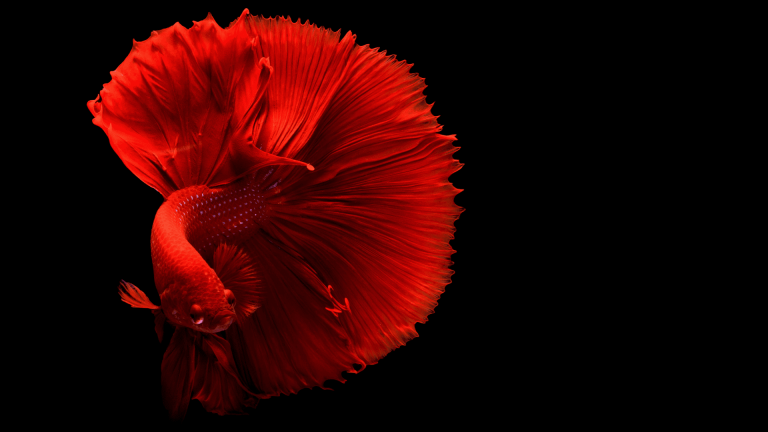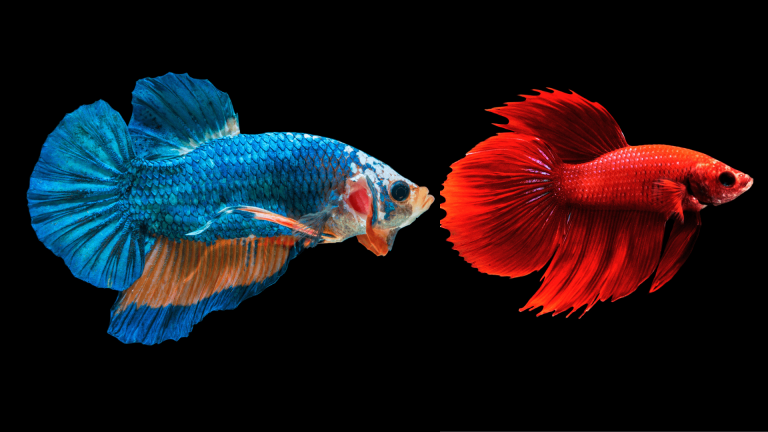Unveiling the Beauty of Veiltail Betta Fish: A Comprehensive Guide
Contents
- 1 The Apparent Variations in Temperament and Behavior Among Veiltail Betta Fish
- 2 Are Veiltail Betta Fish Aggressive?
- 3 How to Take Care of Veiltail Betta Fish
- 4 What to Feed your veiltail Betta Fish
- 5 How Long Do Veiltail Betta Fish Live?
- 6 Breeding Process of Veiltail Betta Fish
- 7 How Big do Veiltail Bettas Get?
- 8 Fish Tank for Veiltail Betta Fish
- 9 Is the Veiltail Vetta Suitable for Your Aquarium?
- 10 Here are Some Frequently Asked Questions About Veiltail Betta Fish
- 10.1 What is a veiltail betta fish?
- 10.2 How long do veiltail betta fish live?
- 10.3 Can I keep veil tail bettas in a small bowl or vase?
- 10.4 Can veil-tail bettas live with other fish in a community tank?
- 10.5 How often should I feed my veil-tail betta fish?
- 10.6 Can I breed veil-tail betta fish at home?
- 10.7 How can I tell the gender of a veil-tail betta fish?
- 11 Conclusion
Veiltail betta fish, known for their stunning, flowing fins and vibrant colors, have become popular among aquarium enthusiasts. Also referred to as Siamese fighting fish, these unique creatures possess grace and elegance, making them a true delight to observe. This article will explore the mesmerizing world of veil tail bettas, covering their origins, care requirements, ideal tank setup, feeding habits, and more. So, let’s dive into the captivating realm of veil-tail betta fish!
The Apparent Variations in Temperament and Behavior Among Veiltail Betta Fish
While veiltail betta fish share some general behavior and temperament traits with other betta fish, a few differences are worth noting. Here are some apparent differences in the behavior and temperament of veil-tail betta fish:
01. Aggression Levels
Veiltail bettas, like other betta fish, can display territorial and aggressive behavior, especially males. However, details are often considered less aggressive than betta varieties, such as crown tails or half-moons. It doesn’t mean they won’t display aggression. Still, it might be relatively milder in veil tails.
02. Fin Nipping
Veiltail bettas are known for their long, flowing fins, which can make them more prone to fin nipping. The extended and delicate fins of details can attract other fish’s attention, including bettas. It’s essential to provide ample space and minimize the presence of fin-nipping tankmates to prevent damage to their fins.
03. Activity Level
Veiltail bettas tend to be relatively active swimmers than other betta varieties. Their flowing fins allow graceful movement through the water, and they often curiously explore their surroundings. Providing a spacious tank with an ample swimming area is beneficial to accommodate their active nature.
04. Curiosity and Interaction
Veiltail bettas are known to be curious and interactive with their owners. They may readily approach the front of the tank when their owners come, displaying recognition and engagement. Some details can even learn to recognize their owner’s presence and exhibit a response to their interactions.
05. Individual Personalities
It’s important to remember that each veil tail betta, like any fish, possesses its unique personality. While specific behavior patterns may share among veil tail bettas, there can be variations in temperament and behavior between individuals. Some details may be more docile and tolerant of tankmates, while others may be more territorial and assertive.
Are Veiltail Betta Fish Aggressive?
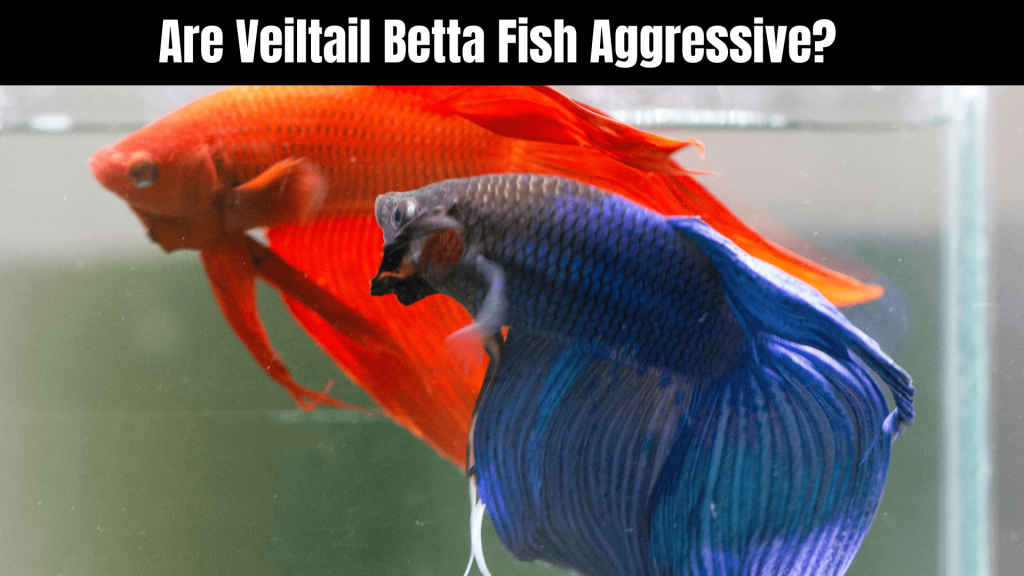
Veiltail bettas can exhibit territorial and aggressive behavior, particularly in males. However, it’s important to note that aggression levels can vary from fish to fish. While details are generally considered less aggressive than other betta varieties, such as crown tails or half-moons, individual temperament, and behavior can still differ.
Male veil-tail bettas are more prone to aggression, especially towards other males and fish with long, flowing fins that may be mistaken for rival males. They have an instinct to establish and defend their territory. On the other hand, female veil-tail bettas are typically less aggressive but may still display territorial behavior, especially when breeding.
It recommends providing each veil tail betta with space to minimize aggression and potential conflicts. Keeping them in separate tanks or utilizing dividers within a larger tank can prevent the attack and reduce stress. Monitoring their behavior is essential, especially during introductions or when considering tankmates.
Providing ample hiding spots and visual barriers, such as plants or decorations, can also help create territories and reduce potential confrontations. Ensuring proper space, enrichment, and a balanced diet can contribute to a more harmonious environment for veil tail bettas and help mitigate aggressive behavior.
While aggression is a natural aspect of their behavior, each fish is unique, and individual temperament can vary. By observing and understanding the behavior of your specific veil tail betta, you can provide the appropriate care and environment to promote their well-being.
How to Take Care of Veiltail Betta Fish

Taking care of veil tail bettas involves providing the right environment, nutrition, and attention to ensure their health and well-being.
Here are some essential care tips
Tank Setup
- Tank Size: Provide a tank with a minimum size of 5 gallons to give your veil tail betta ample space to swim and explore.
- Water Parameters: Maintain a water temperature between 76-82°F (24-28°C) using a heater and ensure a pH level of 6.5-7.5. Use a reliable water testing kit to monitor water parameters regularly.
- Filtration: Use a gentle filter that creates a slow flow to prevent stress and damage to their delicate fins. Bettas prefer calm water conditions.
- Substrate and Decorations: Choose a smooth substrate to avoid damaging their fins. Include live or silk plants, caves, and other decorations to provide hiding spots and create a stimulating environment.
Water Quality
- Regular Water Changes: Perform 20-30% weekly water changes to maintain clean and healthy water. When changing the water, use a gravel vacuum to remove trash and leftover food from the substrate.
- Dechlorination: Treat tap water with a de-chlorinator before adding it to the tank to remove harmful chemicals.
Feeding
- Balanced Diet: Offer a high-quality betta pellet or flake food as the main staple. Look for foods formulated for bettas to ensure proper nutrition.
- Variety: Supplement their diet with frozen or live foods like bloodworms, daphnia, and brine shrimp to provide essential nutrients and mimic their natural diet. Rotate between different food types to offer dietary variety.
- Portion Control: Feed your veil tail betta small portions twice a day, only providing what they can consume within a few minutes. Excessive eating can lead to obesity and other health problems.
Tankmates
- Consider tankmates carefully, as veil tail bettas can be territorial. If you have tankmates, opt for peaceful species such as tiny snails or non-aggressive fish like neon tetras or pygmy corydoras. Continually monitor their interactions and be prepared to separate them if any aggression occurs.
Environmental Enrichment
- Provide hiding spots: Include live plants, caves, and decorations to create hiding spots and mimic their natural habitat. It offers cerebral stimulation and lessens stress.
- Gentle Lighting: Use soft lighting to replicate natural daylight. Avoid bright and harsh lights that may stress your veil tail betta.
- Regular Observation: Spend time observing your betta’s behavior to detect signs of illness or distress. Look for changes in appetite, behavior, or physical appearance.
Maintain a Clean Environment
- Regular Tank Maintenance: In addition to frequent water changes, perform routine tank maintenance, including cleaning the filter, removing debris, and trimming or removing dead plant matter.
- Avoid Chemicals: Avoid using chemicals or cleaning agents that can harm fish. If necessary, use aquarium-safe products specifically designed for fish tanks.
Following these care guidelines can provide a suitable and enriching environment for your veil tail betta, ensuring their overall health and happiness.
What to Feed your veiltail Betta Fish

When it comes to feeding veil tail bettas, it’s essential to provide a balanced diet that meets their nutritional needs. Here are some recommendations for feeding your veil-tail betta fish:
01. High-Quality Betta Pellets or Flakes
Choose a high-quality betta pellet or flake food as the staple diet for your veil tail betta. Look for options formulated explicitly for bettas, which contain nutrients for their health and vitality. These foods typically provide a balanced combination of protein, vitamins, and minerals.
02. Frozen or Live Foods
You can supplement their staple food with frozen or live foods to provide variety and a more natural diet. Some popular options include:
- Bloodworms: Frozen or freeze-dried bloodworms are a favorite among bettas. They are rich in protein and can feed as an occasional treat.
- Daphnia: These tiny crustaceans are another excellent option. They provide fiber and help with digestion. Daphnia can be found frozen or live.
- Brine Shrimp: Brine shrimp, either frozen or live, are a good source of protein and can be a nutritious addition to their diet.
3 . Frequency and Portion Control
Feed your veil tail betta small portions daily. Give them an amount they can consume within 2-3 minutes. Overfeeding can lead to obesity and health issues, so avoiding excess food is essential.
4. Occasional Treats
You can occasionally offer treats to your veil tail betta fish to add variety and stimulate their appetite. These can include small pieces of fresh or frozen fruits like peeled and deseeded cucumber, zucchini, or blanched peas (remove the outer skin). However, treats should only make up a small portion of their diet.
5 . Observation and Adjustments
Monitor your veil tail betta’s feeding behavior and adjust their diet if necessary. Some fish may have specific preferences or dietary requirements. Adjust the portion sizes accordingly if you notice any signs of overfeeding or lack of appetite.
To preserve the purity of the water and avoid waste buildup, remove any uneaten food from the tank.
By providing a varied and balanced diet, you can ensure that your veil-tail betta fish receives the necessary nutrients for their overall health, vibrant colors, and longevity.
How Long Do Veiltail Betta Fish Live?
Like other betta fish, veil-tail betta fish have a typical lifespan of between two and four years. They can occasionally live up to 5 years or even longer, though, with the proper care and a healthy environment. It’s important to note that individual genetics, diet, water quality, and overall care can significantly impact the lifespan of a veil tail betta.
To maximize the lifespan of your veil tail betta, providing them with optimal living conditions is crucial. Includes providing a suitable tank size, maintaining clean water with appropriate temperature and water parameters, offering a balanced diet, and minimizing stress. Regular observation and prompt action in case of any signs of illness or distress are also crucial in ensuring their well-being and potentially extending their lifespan.
Even though veil-tail bettas may not live as long as other fish species, aquarium hobbyists favor them for their alluring beauty and distinctive traits.
Breeding Process of Veiltail Betta Fish
Breeding veil tail betta fish can be an exciting and rewarding process. Here is a step-by-step guide to the breeding process:
1. Preparing the Breeding Pair
- Selecting Healthy Fish: Choose a male and female veil-tail betta that is healthy, active, and free from visible deformities or illnesses.
- Conditioning: Before breeding, condition the male and female separately by feeding them a nutritious diet of high-quality betta pellets and frozen or live foods. It helps to enhance their overall health and readiness for breeding.
2. Setting up a Breeding Tank:
- Breeding Tank: Prepare a separate breeding tank with around 10-20 gallons capacity.
- Water Conditions: Maintain the water temperature between 78-80°F (25-27°C) and the pH level around 7.0. Ensure the water is clean and free from contaminants.
- Hiding Spots: Provide ample hiding spots in the form of plants, floating objects, or spawning mops. These offer a place for the female to hide and for the male to build a bubble nest.
3. Introduction and Spawning:
- Introduce the Female: Place the female in the breeding tank first, allowing her to acclimate to the environment.
- Introduce the Male: Introduce the male to the breeding tank after a day or two. The male may display courtship behaviors such as flaring and fin displays.
- Courtship and Spawning: The male may build a bubble nest at the water’s surface. He will try to entice the female underneath the nest to initiate spawning. The male wraps his body around the female to release eggs, which the male fertilizes. This process can be quick or may take several hours.
4. Removing the Female:
- After spawning, promptly remove the female from the breeding tank to prevent the male from becoming aggressive toward her. Place her in a separate tank with suitable conditions.
5. Caring for the Eggs and Fry:
- Male’s Role: The male will guard the nest and the eggs. He will retrieve any falling eggs and place them back into the nest. The male will continue to tend to the nest until the fry hatch.
Breeding veil tail bettas requires careful monitoring, water quality attention, and appropriate care for the fry. It’s important to note that not all breeding attempts will be successful, and it may take a few tries to achieve a successful spawn.
How Big do Veiltail Bettas Get?

Veiltail bettas, like other betta fish, typically reach a size of 2.5 to 3 inches (6.35 to 7.62 centimeters) in length when fully grown. The size can vary slightly depending on genetics, diet, and overall care.
It’s important to note that the size mentioned above refers to the body length of veil tail bettas and does not include the length of their flowing fins. The majestic, long fins of veil-tail bettas can extend well beyond their body, adding to their overall visual appeal.
When considering tank size and space requirements for veil tail bettas, it’s crucial to consider their swimming and fin movement. Providing an adequately sized tank with plenty of horizontal swimming space allows them to display their elegant finnage and swim freely and comfortably.
Remember to consider the individual needs of your veil tail betta and provide proper care to ensure their overall well-being and happiness.
Fish Tank for Veiltail Betta Fish

It advises providing a tank with a minimum capacity of 5 gallons (19 liters) or more for veil-tail betta fish. Here are some considerations when selecting a tank for your veil-tail betta fish:
Size
Choose a tank with sufficient space for your veil tail betta to swim and explore. Larger tanks provide more swimming areas and allow for better water parameters stability. A larger tank also makes it easier to maintain water quality and temperature.
Shape
Opt for a rectangular or square-shaped tank rather than a tall or round one. Veiltail bettas prefer horizontal swimming space, and a more extended tank footprint accommodates their graceful movements better than an elevated tank.
Filtration
Select a tank with a gentle filter that provides adequate water flow and filtration. Bettas prefer calm water, so choose a filter that doesn’t create strong currents, as it can stress your veil tail betta and damage their delicate fins. Sponge filters or adjustable flow filters are good options for betta tanks.
Cover and Lid
Ensure the tank has a secure lid or cover to prevent your veil tail betta from jumping out. Bettas are known to be jumpers, and having a top helps to keep them safe and secure.
Substrate and Decorations
Choose a smooth substrate such as sand or rounded gravel to avoid damaging your veil tail betta’s delicate fins. Live or silk plants, caves, and other decorations can provide hiding spots and create a stimulating environment for your fish.
Heating
Veiltail bettas are tropical fish and require a stable water temperature between 76-82°F (24-28°C). Consider getting a reliable aquarium heater to maintain the appropriate temperature in the tank.
Remember to regularly monitor water parameters, perform routine maintenance, and keep the tank clean to ensure the well-being of your veil tail betta fish.
Providing an adequately sized and well-maintained tank will promote the health and happiness of your veil tail betta and allow you to appreciate their beauty and graceful swimming fully.
Is the Veiltail Vetta Suitable for Your Aquarium?
Veiltail bettas are indeed suitable for aquariums, but there are several factors to consider before adding them to your tank:
Tank Size
Veiltail bettas require a tank size of at least 5 gallons (19 liters) or larger. They need ample space to swim and explore. A larger tank also helps maintain water quality and stability.
Compatibility
Veiltail bettas are generally unsuitable for community tanks, especially with fish with long, flowing fins. They can be territorial and exhibit aggression towards tankmates with similar physical attributes. It’s best to keep them in a species-specific or single-species setup. If you want to have tankmates, choose peaceful and non-fin-nipping species that won’t trigger aggression.
Water Parameters
Veiltail bettas are tropical fish and require specific water conditions. The ideal temperature range is 76-82°F (24-28°C), and the pH level should be around 6.5-7.5. Maintaining clean water with regular water changes and proper filtration is essential.
Tank Setup
Provide a well-decorated tank with hiding spots and plants. Veiltail bettas enjoy having places to rest and explore. Ensure the tank has a lid or cover to prevent them from jumping out, as bettas are known to be jumpers.
Individual Temperament
Each veil tail betta has its personality. While some may be more docile, others can be more assertive or territorial. Monitoring their behavior and adjusting the tank setup or tankmates is essential if necessary.
Here are Some Frequently Asked Questions About Veiltail Betta Fish

What is a veiltail betta fish?
A large group of betta fish known as veil tail betta fish or Siamese fighting fish are distinguished by their long, flowing fins and vivid colors. They are tropical freshwater fish originating from Southeast Asia.
How long do veiltail betta fish live?
On average, veil tail bettas have a lifespan of around 2 to 4 years. However, they can live up to 5 years or even longer with proper care and a healthy environment.
Can I keep veil tail bettas in a small bowl or vase?
Keeping veil tail bettas in small bowls or vases is recommended with proper filtration and heating. They require a tank size of at least 5 gallons or larger to provide sufficient swimming space and maintain water quality.
Can veil-tail bettas live with other fish in a community tank?
Veiltail bettas are generally unsuitable for community tanks, especially with fish with long, flowing fins. They can be territorial and exhibit aggression towards tankmates with similar physical attributes. It’s best to keep them in a species-specific or single-species setup.
How often should I feed my veil-tail betta fish?
Feed your veil tail betta small portions twice a day. Give them an amount they can consume within 2-3 minutes. Overfeeding can lead to obesity and health issues, so avoiding excess food is essential.
Can I breed veil-tail betta fish at home?
Yes, veil-tail bettas can breed at home. Breeding requires a separate breeding tank, conditioning males and females, introducing them, and providing suitable spawning conditions. However, breeding bettas requires careful monitoring and knowledge of the process.
How can I tell the gender of a veil-tail betta fish?
Male veil-tail bettas typically have longer fins and more vibrant colors than females. Females tend to have shorter fins and a rounder body shape. However, the most reliable way to determine their gender is by observing their behavior and the presence or absence of an egg spot on the female’s belly.
Conclusion
Veil-tail betta fish are remarkable and captivating aquatic creatures that bring beauty and elegance to any aquarium. Their long, flowing fins, vibrant colors, and unique personalities make them popular among fish enthusiasts.
However, it’s important to remember that veil tail bettas require proper care and a suitable environment to thrive. Providing them with an adequately sized tank, maintaining optimal water conditions, offering a balanced diet, and considering their temperament is crucial for their well-being.
With the proper care and attention, veil tail bettas can flourish and provide endless enjoyment through their graceful swimming, stunning displays, and interactive behavior. Whether you are a beginner or an experienced fish keeper, the veil-tail betta fish is a beautiful addition to any aquarium, adding a touch of splendor and wonder to your underwater world.

